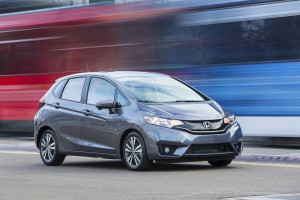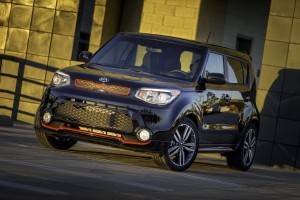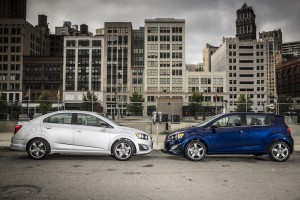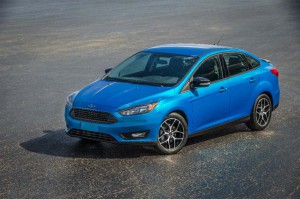
The Honda Fit comes highly recommended for teenage drivers with plenty of safety features and versatility.
With the kids heading back to school, you may be thinking about putting some of your older ones on wheels. But what are the best cars for a teen driver?
Coming up with the right model can be a challenge, but there are some important factors to keep in mind, safety first and foremost. So, while your teen might have a BMW M3, Ford Mustang or Volkswagen Golf R high on their list, you’re likely to look for something a bit more practical.
And affordable. You don’t want to strain your household budget or stretch the thin wallet of a teen heading off to college. And affordability involves more than just the up-front price. You also have to consider fuel and insurance costs. Unfortunately, teens typically get socked with hefty premiums , though you can bring that down with the right car.
The good news is that you can hand your teen driver keys to a car they’ll enjoy – and that you can afford and feel confident they’ll stay safe driving. Here’s a list of the Top 10 Cars for Teens, according to a study by Cars.com. The list factors in total cost of ownership and only includes those models that have earned a Top Safety Pick rating from the Insurance Institute for Highway Safety.
- Honda Fit. Slightly smaller than the familiar Honda Civic, Honda has come up with a car that’s both fun and practical to own and drive thanks to its versatile “magic seats.” You can pack in your friends – or a dorm room’s worth of stuff when heading off to college. It starts at $16,060, and using the Kelley Blue Book online calculator has a total cost of ownership of $28,018. Fuel economy is 29 City, 37 Highway, according to the EPA.
- Kia Soul. This boxy crossover has earned a huge following for both its style and flexibility. This tall urban hatchback offers plenty of options, from bigger wheels to an 8-inch navi screen, but you can drive off with a reasonably well-equipped base model for just $16,015. The total cost of ownership is estimated at around $29,900, and you’ll get a reasonably good 24 mpg City, 30 Highway.
- Mazda3. The small Japanese maker has long been known for adding a little bit more fun to the manners of its products, large and small. That zoom-zoom factor only enhances the overall appeal, especially if you opt for the forward collision warning that boosts the hatchback’s rating to Top Safety Pick+, according to the IIHS. Base price is $18,815, with a total cost of ownership estimated at $30,069. Fuel economy is rated at 30 and 41 with the automatic transmission.
- Chevy Sonic. Not traditionally known for its small cars, Chevy has scored well with the U.S.-made Sonic because of its style, surprisingly well-outfitted interior, spaciousness and functionality. It also boasts one of the best infotainment systems in a small car. Prices start at $15,070, with a total cost of ownership of $30,108. Fuel economy runs 26 and 35.
- Hyundai Elantra. Hyundai has done a bang-up job transforming itself from an econobox brand to one offering surprisingly sophisticated styling and great value. The roomy Elantra compact is one example why. It’s roomy, has a great safety rating and is reasonably affordable to operate. Base price is $18,075, with a $31,793 cost of ownership. Fuel economy is rated at 28 and 38.
- Subaru Impreza. Yes, Impreza impresses, whether you’re looking for something practical, fun to drive or safe, it delivers on all counts. Teen drivers are likely to appreciate its on-road manners, as well as its great infotainment system. Parents might want to opt up to the EyeSight crash avoidance system. Available as a sedan or wagon, pricing starts at $18,990, with the cost of ownership estimated at $31,864. Expect 28 mpg City, 37 Highway.
- Toyota Prius. The current Toyota hybrid isn’t the most exciting vehicle, but it has a Top Safety Pick rating and incredible mileage. A new version of the world’s best-selling hybrid will be hitting market in the coming months, so some shoppers might want to wait for its arrival. Expect better styling, more space and as much as a 10% bump in fuel economy. The 2015 Prius starts at $15,035, with a $34,633 estimated cost of ownership. Fuel economy is 51 City, 48 Highway.
- Volkswagen Golf. VW has launched a whole “family” of Golf models for 2015, so there are plenty of options to choose from. As a group, they’ve won a wide range of awards, including North American Car of the Year and Motor Trend Car of the Year. There’s a diesel, an all-electric, gas versions and the sporty Golf R. You can buy into the Golf family starting at $18,815, with an estimated $35,710 cost of ownership. Fuel economy is 25 and 37 for the base model.
- Jeep Renegade. While many teens lust for the familiar Wrangler, the all-new Renegade is a safer, more practical and affordable alternative for teens. It is roomy, capable and fun to drive and even has removable roof panels. The new SUV starts at $18,990. Because it’s so new there’s no data for figuring cost of ownership. Mileage is 24 City, 31 Highway.
- Ford Focus. Rounding out the list is Ford’s compact model. It’s roomier than the little Fiesta yet gets nearly the same fuel economy. It’s one of the most stylish models on this list and offers both practicality and fun. There also are plenty of options, including a superefficient 1.0-liter turbo EcoBoost engine that will boost fuel economy to 40 mpg. The base model comes in at 26 City, 36 Highway. The base price is $19,785, with the total cost of ownership estimated at $34,153.




Sheer stupidity in display here. Teens are amoung the highest death rates in car accidents, because they misjudge risk and don’t have experience to avoid bad situations. Teen drivers should not be driving new cars–the should be driving Grandma’s 2005 Grand Marquis!
We’ve often suggested that but let’s get real, Prophet. Some WILL buy new and we’d rather recommend the best than ignore the topic. Oh, and recall the old Marquis doesn’t even have electronic stability control, never mind Collision Avoidance tech. Sadly, it may be something that is needed to save a kid who’s texting.
Paul A. Eisenstein
Publisher, TheDetroitBureau.com
What is “best” is some what subjective as vehicle cost certainly isn’t the deciding factor of what is best for many young drivers. It might be best for a family budget but there are a lot of issues other than vehicle cost to address when teenagers start driving. I certainly would not recommend starting most young people out in an M3 or Corvette for obvious reasons.
Bigger is better, read your article from August:
Forget Those 5-Star Ratings; Bigger is Safer
What a boring list Except maybe the Impreza, Golf or Fiesta, and then they need a few sporty upgrades. When I went to school, about fifty years ago, all the kids with practical economy cars were the bullied kids. You don’t need a Mustang GT or Camaro Z28 but you do need something that says fun and Sonics don’t say fun.
Actually, I just let my 15-year-old drive a Focus ST. He thought it was plenty of fun, even suggesting that he could get a regular Focus and “juice it up.” Based on what I hear from him and his friends, they like smaller cars, like Sonics, because gas is expensive and they understand power-to-weight ratios.
Maybe a 15 year old should not be driving a “juiced up” anything? Perhaps the power-to-weight ratio should favor slow not quick acceleration until teens have considerable driving experience and skills?
It is reasonable to suggest that young (at risk) drivers should start their driving careers in cars with high levels of primary and secondary safety (good brakes, steering and air bags etc) but it is also vital that they learn in cars which demand a high level of engagement. To enable this engagement and learning of the driving process, learners should start in cars with manual transmissions, no cruise control and probably no ABS or ESC.